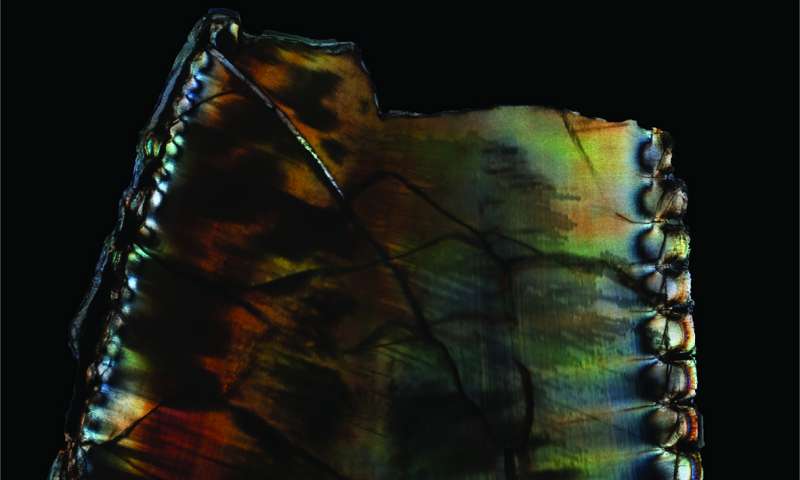HOME
Researchers discover surprising connection between prehistoric dinosaurs and mammals in their teeth

When most people think of ferocious, blade-like teeth on prehistoric creatures they picture Smilodon, better known as the saber-toothed tiger. But in the world of dinosaurs, theropods are well known for having blade-like teeth with serrated cutting edges used for biting and ripping their prey. And until recently, the complex arrangement of tissues that gave rise to these terrifying teeth was considered unique to these meat-eating dinosaurs.
In a paper published December 16 in Biology Letters, lead author Megan Whitney, postdoctoral fellow in the Department of Organismic and Evolutionary Biology, Harvard University, examined thin fossil slices of gorgonopsian's teeth and discovered similar complex arrangement of tissues that made the steak-knife-like serrations in theropods.
Gorgonopsians are a group of synapsids from the middle-late Permian 270-252 million years ago. These animals, like other synapsids, are considered to be the forerunners of mammals and fall within the lineage that eventually gave rise to mammals. "These animals were the apex predators of their day and are characterized by their sabre-like canine that could extend up to 13 cm long," said Whitney.
Previous studies of theropod dinosaurs uncovered a complex arrangement of tissues made of both enamel and dentine that formed the serrations on their teeth. This complex arrangement was considered unique to theropod dinosaurs. But no one had ever made a thin section of a gorgonopsian tooth before to examine the serrations.
News Source